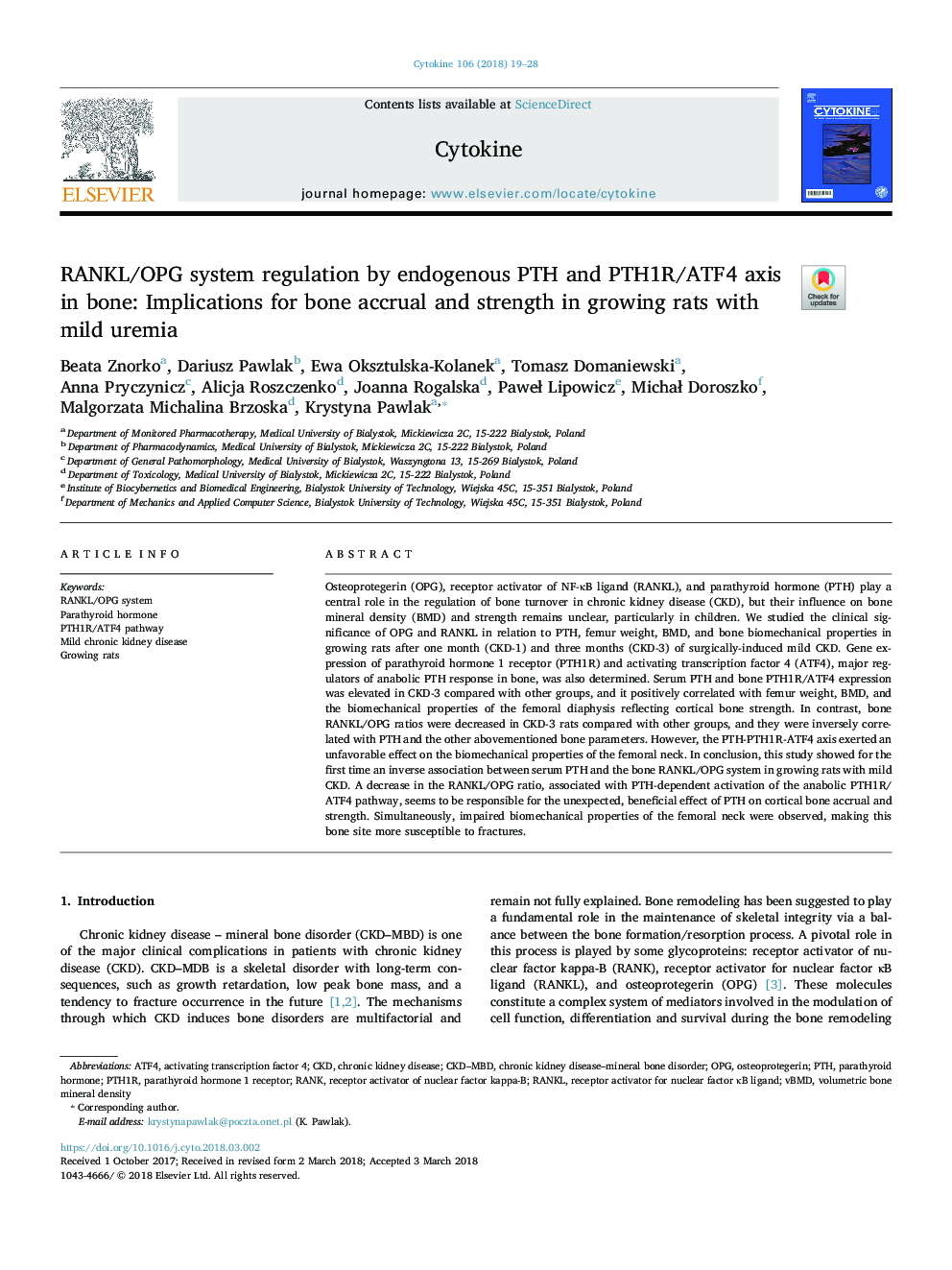| Article ID | Journal | Published Year | Pages | File Type |
|---|---|---|---|---|
| 8628929 | Cytokine | 2018 | 10 Pages |
Abstract
Osteoprotegerin (OPG), receptor activator of NF-κB ligand (RANKL), and parathyroid hormone (PTH) play a central role in the regulation of bone turnover in chronic kidney disease (CKD), but their influence on bone mineral density (BMD) and strength remains unclear, particularly in children. We studied the clinical significance of OPG and RANKL in relation to PTH, femur weight, BMD, and bone biomechanical properties in growing rats after one month (CKD-1) and three months (CKD-3) of surgically-induced mild CKD. Gene expression of parathyroid hormone 1 receptor (PTH1R) and activating transcription factor 4 (ATF4), major regulators of anabolic PTH response in bone, was also determined. Serum PTH and bone PTH1R/ATF4 expression was elevated in CKD-3 compared with other groups, and it positively correlated with femur weight, BMD, and the biomechanical properties of the femoral diaphysis reflecting cortical bone strength. In contrast, bone RANKL/OPG ratios were decreased in CKD-3 rats compared with other groups, and they were inversely correlated with PTH and the other abovementioned bone parameters. However, the PTH-PTH1R-ATF4 axis exerted an unfavorable effect on the biomechanical properties of the femoral neck. In conclusion, this study showed for the first time an inverse association between serum PTH and the bone RANKL/OPG system in growing rats with mild CKD. A decrease in the RANKL/OPG ratio, associated with PTH-dependent activation of the anabolic PTH1R/ATF4 pathway, seems to be responsible for the unexpected, beneficial effect of PTH on cortical bone accrual and strength. Simultaneously, impaired biomechanical properties of the femoral neck were observed, making this bone site more susceptible to fractures.
Keywords
Related Topics
Life Sciences
Biochemistry, Genetics and Molecular Biology
Endocrinology
Authors
Beata Znorko, Dariusz Pawlak, Ewa Oksztulska-Kolanek, Tomasz Domaniewski, Anna Pryczynicz, Alicja Roszczenko, Joanna Rogalska, PaweÅ Lipowicz, MichaÅ Doroszko, Malgorzata Michalina Brzoska, Krystyna Pawlak,
